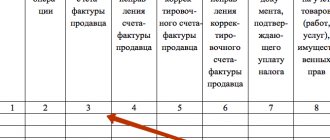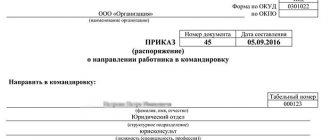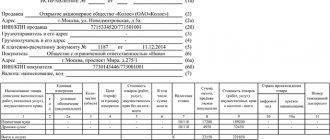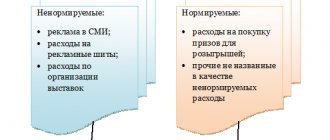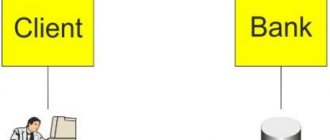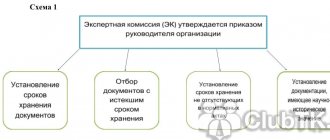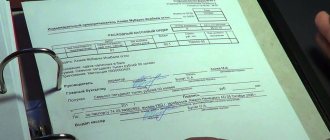Kontur.Accounting is a web service for small businesses!
Quick establishment of primary accounts, automatic tax calculation, online reporting, electronic document management, free updates and technical support.
Try it
Any organization must ensure systematization, integrity, safety of documents and convenient access to them. To do this, the documents are stitched. This activity requires accuracy and attentiveness. We’ll tell you how to staple documents and what you need for this in our article.
Basic rules governing the process of document stapling:
- Methodological recommendations approved by Order of the Federal Archive of December 23, 2009 No. 76;
- GOST R 51141 - 98 “Office management and archiving”;
- Recordkeeping requirements developed by industry departments.
Documents subject to firmware
You have to stitch documents and copies of documents that consist of two or more sheets:
- staffing schedule;
- orders of personal and general personnel;
- invoices;
- invoices;
- acts of completed work;
- cash book;
- expense reports;
- waybills;
- salary statements;
- other documents.
The stapling procedure must be approached responsibly: documents that are not neatly filed may not be accepted upon delivery, and potential partners may refuse to cooperate with you. Poor firmware and storage can even lead to substitution of papers.
What documents need to be stapled?
In office work, documentation is most often stapled in order to transfer it to the archive, or when submitting it to a bank and other financial institutions. Also, document firmware is required when submitting reports to extra-budgetary funds and the Federal Tax Service. The document must not only be stitched, but also numbered. Papers are sewn together either with thread or tape, or using special machines.
The following types of documentation are subject to firmware:
- orders (both general and personal);
- staffing schedule;
- reports (for example, expense report);
- invoices;
- acts of completed work;
- cash book;
- statements.
It is also necessary to stitch documentation sheets when submitting an application for participation in a tender and in other cases.
Video - how to stitch things together before filing them in the archive:
Registration procedure
Documents to be bound are first sorted by date, each sheet is numbered with Arabic numerals in the upper right corner, starting with one. The inventory is not numbered. For the cover, they usually take a special paper folder “Case”. To staple standard documents, use an A4 format binder. If the documentation contains envelopes, they are also numbered, and this happens first, and then the contents in it are numbered. If a document has attached sheets, this document is numbered as one, after which an inventory of the attached additions is placed on the reverse side of this sheet.
If an error is made in the numbering, it is carefully crossed out with a thin line and corrected. Next to it is written “Believe the Corrected”, certified by the signature of the responsible person and stamped.
Too large a volume of documentation (more than 250 sheets) should be divided into volumes. Each of them has its own separate numbering. Before the hemming process, all staples and paper clips from the stapler must be removed.
How to stitch a document correctly
All invoices are entered in chronological order. After the conclusion of the tax period, the book should be numbered and bound. This is done within 25 days of the month following the tax period. All printed paper sheets are stitched together.
- Usually a stack of sheets is pierced with a hole punch, a thread is passed through the hole, the ends of which are fixed on the back side of the stack. The ends of the thread are sealed. The book can be stored in a binder.
- Additional sheets, including adjustment sheets, are also certified with a signature and seal, and are attached to the purchase book for the period to which they relate. The same applies to invoices. If the book contains only 1 sheet, it is issued as a book, stamped and signed by the director.
Now all taxpayers are switching to electronic forms of documentation and reporting. Purchase books, invoices and additional sheets are much easier to prepare and store on the computer. To transfer reports and extracts to the tax authorities, these documents must be certified with an enhanced electronic signature of the director or individual entrepreneur.
Stitching methods and necessary tools
There are the following ways to staple documents:
- classical method - using a needle and thread, often when sewing a small volume of material in two, three or five punctures;
- using a screwdriver and elastic rope - usually for a large volume of documentation;
- using a hole punch - similar to the classic method, only a hole punch is used instead of a needle;
- using a binding machine - used in printing.
To file documentation you will need the following tools:
- needle (hole punch, awl, drill) – depends on the volume of documents to be stitched;
- dense threads (twine, cord, ribbon);
- case cover 229×324 mm - when creating an archival file;
- paper sticker 4x8 cm - white sheet of paper - witness;
- office glue;
- scissors.
How to staple documents correctly
Filing of documentation can be done in two, three, four or five punctures. On the left side of the sheet, at a distance of 1-2 cm from the edge, punctures are made in the required number. Then a thread is passed through them according to the scheme (below are diagrams for all methods of stitching documents). On the last page, the ends of the thread are tied in a knot.
Having sewn the documents together with threads, stick the sealing paper onto their ends so that the ends of the thread peek out from under it. The paper is marked “Stitched and numbered” indicating the number of pages. After this, a date, an official’s signature and a seal are affixed. In all methods, only the stitching pattern will change. The procedure itself is the same.
How to flash documents correctly
Documents can be stitched with thread, lace or ribbon. This process must be approached responsibly, because if the firmware is of poor quality or weak, then the papers can be easily separated, which should not be allowed, because they are stitched so that it is impossible to put another document on them or lose part of it.
Moreover, if you are stitching papers for submission to government agencies, then incorrectly completed firmware can lead to the fact that the Federal Tax Service, extra-budgetary funds or the court simply refuse to accept them.
In 2 punctures
Firmware with 2 holes is very simple. Holes can be made either with a needle or with a hole punch. Of course, it's easier to pass thread, ribbon or string through the holes made with a hole punch.
The punctures should be on the left edge of the sheet (like a regular book) approximately 1-2 cm from it. After you pierce the paper, you need to pass the thread through the hole several times and tie the ends of the thread with a knot on the last page.
Video showing how documents are sewn together with threads through 2 holes:
In the upper right corner of each sheet you need to put the page number.
After this, the stitched documentation must be secured by gluing 3x5 cm paper onto the ends of the thread so that the ends peek out from under it. The paper is marked “Stitched and numbered” and the number of pages is also indicated. Afterwards, depending on where the papers will be provided, details such as the official’s signature, seal, and date are placed on the paper.
For 3 holes
Things are somewhat more complicated with stitching with three punctures, especially if you immediately pierce the sheets with a thread and a needle, rather than using a hole punch. To sew three holes on paper, follow the step-by-step instructions below with the diagram:
- Make the first puncture with a needle and thread on the back of the document being stitched in the middle of the sheet
- The second puncture with a needle is made on the front side of the document
- The next puncture should be made from the back of the third hole
- In the next step, we pass the needle and thread through the first hole - in the middle of the document on the front side
- Then you should tighten the threads so that they tightly pull the stitched sheets together and tie a knot as shown in the photo
The video clearly explains how to sew documents with 3 holes:
For 4 holes
This type of firmware is done only for documents that have a special status of importance.
To sew documentation into 4 holes, follow the following diagram and step-by-step instructions:
If the document being stapled contains many sheets, then you can pre-prepare four holes using a hole punch, drill or a special machine.
- You should start threading from the back side of the second hole from the edge.
- Next, the thread is threaded into the hole that is closest to the edge and the previously passed hole.
- Then we thread the thread again in the same way as in the first step.
- Next - from the front side to the next hole
- In the extreme puncture on the back side
- From the front side of the hole that we passed in the fourth step
- And connect the ends of the thread
- At the same time, we try to pull the thread so that it tightly compresses the sheets of documents
- All that remains is to tie the thread in a knot
- Trim excess length of thread ends
If the documents have been stitched correctly, all that remains is to number the sheets and stick a piece of paper on top of the bundle with the inscription “Stitched, numbered and sealed by ______ ( _____________ ) sheets” and put down the necessary details of the certifier (position, signature and full name).
Video - how to sew a case with 4 holes:
To the corner
Some papers may be corner bound, i.e. in the upper left corner. To do this, you need to make one or two holes in the corner and pass the thread through them several times.
Video - an example of stitching documents through a corner:
A sheet of paper, as in other cases, is glued to a knot of thread, and the details necessary for certification are placed on it.
Features of submitting documents to the archive
Preparation of documentation consists of:
- systematization of documents;
- numbering;
- stapling documentation into one folder;
- filling out the inventory;
- document cover design.
This procedure for filing documentation is considered normal and provides for its storage for at least 25 years. If the papers will be stored for more than 25 years, a cardboard cover will be placed on the set of documents to protect the file. The cover indicates: name of the organization, name of the case (orders, invoices, acts), structural unit, shelf life. If an organization has changed its name for any reason, both names must be reflected on the cover of the document, with the previous one indicated in brackets.
When stitching archival files, make sure the text is readable. Cases are numbered in pencil in the upper right corner. The A3 sheet is numbered as one, stitched on the left and folded. If a sheet is hemmed in the middle, it is numbered as 2 sheets. Pictures, photographs, diagrams, maps are numbered on the reverse side at the top in the left corner.
How to File Expenses-Documents Shopping Book
Description:
How to file a purchase book?
How to design a folder for filing invoices, delivery notes, certificates of completed work and reports? You will find answers to all these questions in this video! My video channel https://www.youtube.com/user/oksana0283 Watch my other video video lessons on 1C 7.7 https://www.youtube.com/watch?v=VG9p07O4Gi8&list=PLXdVwa8C1AkG5MbzaVmuu0gLliXC4bc_G&index=1 Video lessons on 1C 8.2 https ://www.youtube.com/watch?v=ktmU4lAuLss&list=PLXdVwa8C1AkHX81XTA2C5SZ67Wanaf5PU&index=1 All the nuances when STARTING A BUSINESS https://www.youtube.com/playlist?list=PLXdVwa8C1AkGTModwQ4yKnMd767iMQQJq&feature=edit_ok How to build a HURRY BUSINESS https://www. youtube.com/playlist?list=PLXdVwa8C1AkEE1JJefuNdQaGP04fdVAfB&feature=view_all Tax audits - all the pitfalls https://www.youtube.com/playlist?list=PLXdVwa8C1AkE8NhR05z8QLk8i3JKxfBlF&feature=view_all Sample statements of claim https://www.youtube.com/playlist?list =PLXdVwa8C1AkEXEHQ1u0B6_Iwqkjc6lBhJ&feature=view_all All about the VAT tax https://www.youtube.com/playlist?list=PLXdVwa8C1AkHFFxL6klh31bTwDg4nImXh&feature=view_all About the UTII tax https://www.youtube.com/playlist?list=PLXdVwa8C 1AkF8duC72cZelO9kTnZHRGrf&feature=view_all My interesting videos https: //www.youtube.com/playlist?list=PLXdVwa8C1AkH-pDJukkgAGC_u25aLU0G-&feature=view_all Psychology in BUSINESS https://www.youtube.com/playlist?list=PLXdVwa8C1AkGLeqfzc7PmNPEl5SRKvJKb&feature=view_all Be careful! https://www.youtube.com/playlist?list=PLXdVwa8C1AkG0ECao2Npqj5EElWh2OHU6&feature=view_all Relationships with the tax office https://www.youtube.com/playlist?list=PLXdVwa8C1AkGgFgyExsrVmIiRLx83G8Wz&feature=edit_ok Salary and Alimony https://www.youtube.com/ playlist?feature=edit_ok&list=PLXdVwa8C1AkEJSswSAAuqy2dlfGoBdS8u Buyer's rights https://www.youtube.com/playlist?feature=edit_ok&list=PLXdVwa8C1AkEbAr0DEE4pd31EDKcX4AvQ Show more
Subscribe to our Telegram [email protected] _enopen Stay tuned on round-the-clock video trends selection!
Tags:
Purchase Book Filing How to File Office Work Expenses Income Book Report Folder Filings Invoice Bill of Lading Where to File More Form Filed Numbered VAT Invoices Invoice Quarter Month How to Extend Documents Documents Expenditure Documents Check Accountant Archive Folder To Archive Preparation of Archive Checking Numbered Filing Folder Documents To Archive Storage Document Storage
Periods for storing documents in the archive
The storage periods for documentation are regulated by the legislation of the Russian Federation; they depend on the type of documents:
- 75 years - storage period for business books, notarial records, documents related to personnel or privatization;
- 20 years is the shelf life of patent documentation for inventions, documents on capital construction and design activities;
- 15 years - shelf life of scientific works and research;
- 5 years is the storage period for archival documentation of an agricultural organization;
- 5 years - storage period for documents related to film and photography activities;
- 3 years is the period for which photographic and video documents are stored.
At first glance, the procedure for stitching documents looks complicated, but once you study all the rules, the process will no longer seem difficult.
Author of the article: Ekaterina Moguchaya
To reduce the number of paper documents and think less about their firmware and storage, keep records in the web service for small businesses Kontur.Accounting. Here you can work with legally significant electronic documents: take them into account, exchange them with counterparties and send them to regulatory authorities. Our service includes simple accounting, payment of taxes, salaries and contributions, and sending reports via the Internet. The first 14 days of work are free.

